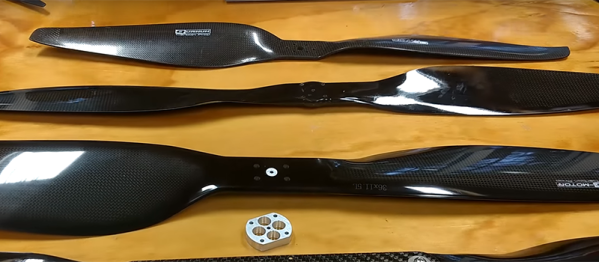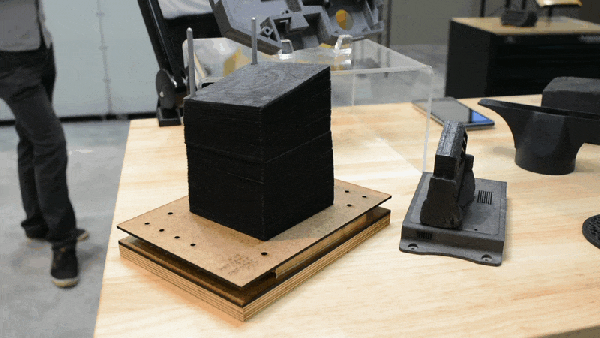Question: Can a flywheel store enough energy to power an airplane? Answer: Yes it can, for certain values of “flywheel” and “airplane.”
About the only person we can think of who would even attempt to build a flywheel-powered airplane is [Tom Stanton]. He’s a great one for off-the-wall ideas that often pay off, like his Coandă effect hovercraft, as well as for ideas that never got far off the ground, or suddenly met it again. For most of the video below, it seems like his flywheel-powered plane is destined to stay firmly in the last category, and indeed, the idea of a massive flywheel taking flight seems counterintuitive. But [Tom] reminds us that since the kinetic energy stored by a flywheel increases as the square of angular velocity, how fast it’s turning is more important than how massive it is. The composite carbon fiber and aluminum flywheel is geared to the propeller of a minimal airplane through 3D-printed bevel gears, and is spun up with an external BLDC motor.
Sadly, the plane never made it very far, no matter how much weight was trimmed. But [Tom] was able to snatch victory from the jaws of defeat by making the propeller the flywheel – he printed a ring connecting the blades of the prop and devised a freewheel clutch to couple it to the motor. The flywheel prop stored enough energy to complete a few respectable flights, as well as suffer a few satisfyingly spectacular disintegrations.
As always, hats off to [Tom] for not being bashful about sharing his failures so we can all learn, and for the persistence to make his ideas take flight.
Continue reading “Flywheel Stores Energy To Power An Airplane – Eventually”

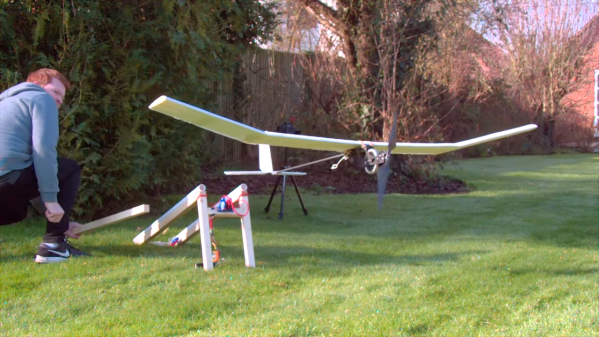
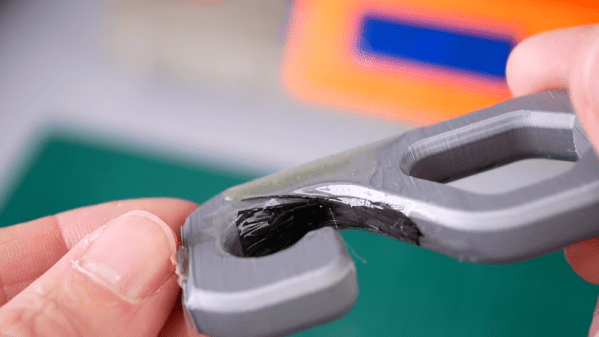
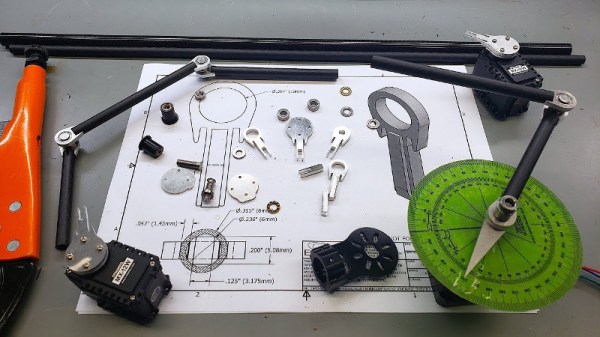


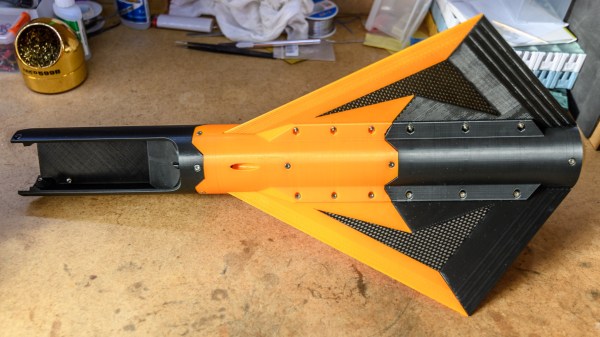
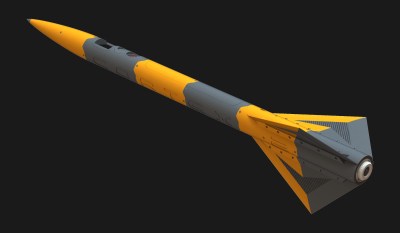 Cortex 1 was launched as part of
Cortex 1 was launched as part of 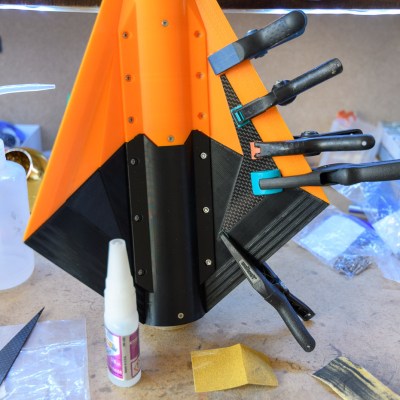 Cortex 2 uses a different rocket motor from its predecessor, which led to another interesting design issue. The new motor is similar to hobby solid rocket motors where a small explosive charge at the top of the motor blows some time after the fuel is gone. This charge is meant to eject a parachute, but the Cortex 2 is not designed to use this method, and so the gasses must be vented. [Foaly] was understandably not enthusiastic about venting hot gasses through the mostly-PLA rocket body. Instead, a cylindrical cartridge was designed that both encases the motor and redirects any gasses from the explosive charge out the rear of the rocket. That cartridge was SLA printed out of what looks to us like Formlabs’
Cortex 2 uses a different rocket motor from its predecessor, which led to another interesting design issue. The new motor is similar to hobby solid rocket motors where a small explosive charge at the top of the motor blows some time after the fuel is gone. This charge is meant to eject a parachute, but the Cortex 2 is not designed to use this method, and so the gasses must be vented. [Foaly] was understandably not enthusiastic about venting hot gasses through the mostly-PLA rocket body. Instead, a cylindrical cartridge was designed that both encases the motor and redirects any gasses from the explosive charge out the rear of the rocket. That cartridge was SLA printed out of what looks to us like Formlabs’ 